Power Screws vs Lead Screws
- Power screws are used in lifting or lowering (pushing or pulling large axial loads)
- Lead screws refer to xyz positioning
Application: Machine Jack
There’s a lead screw which is driven which drives a gear with inner threads which drives a worm which connects to a shaft (driven manually or by a motor)
Power Screws
- A drive mechanism to convert rotary to linear motion
- Often capable of very large mechanical advantage
- Focus on establishing relationship between (input torque) and (output load) for different designs
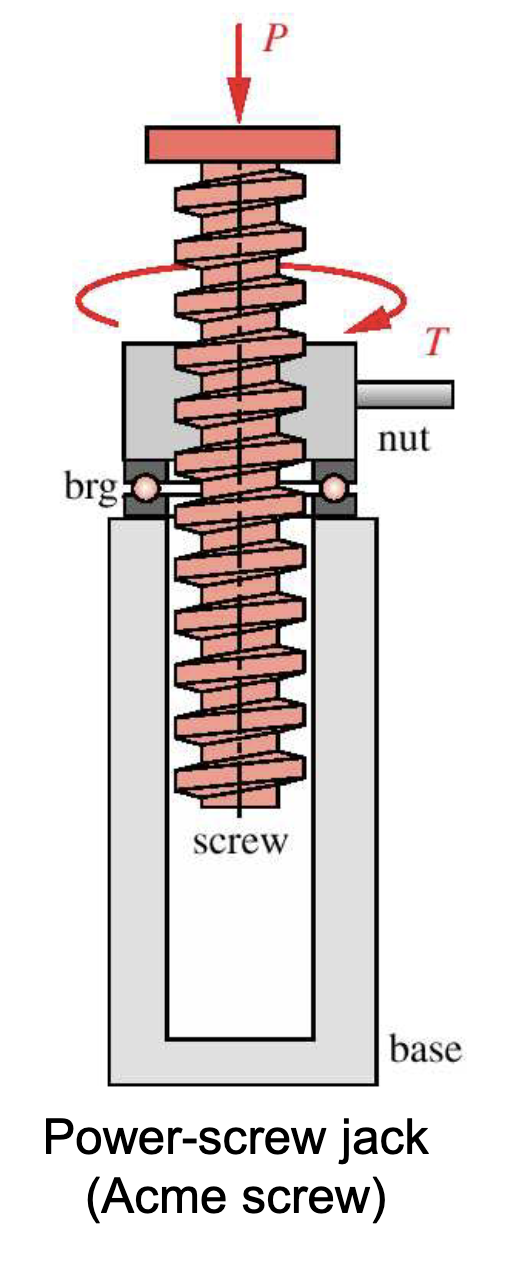
- All the torque calculations occurs on a distance (screw diameter (pitch)) on the nut
Threads
- Uses the same nomenclature as the worm gear pair
- : helix angle
- : lead angle
- : addendum diameter
- : pitch diameter
- : root diameter
- : acme angle =
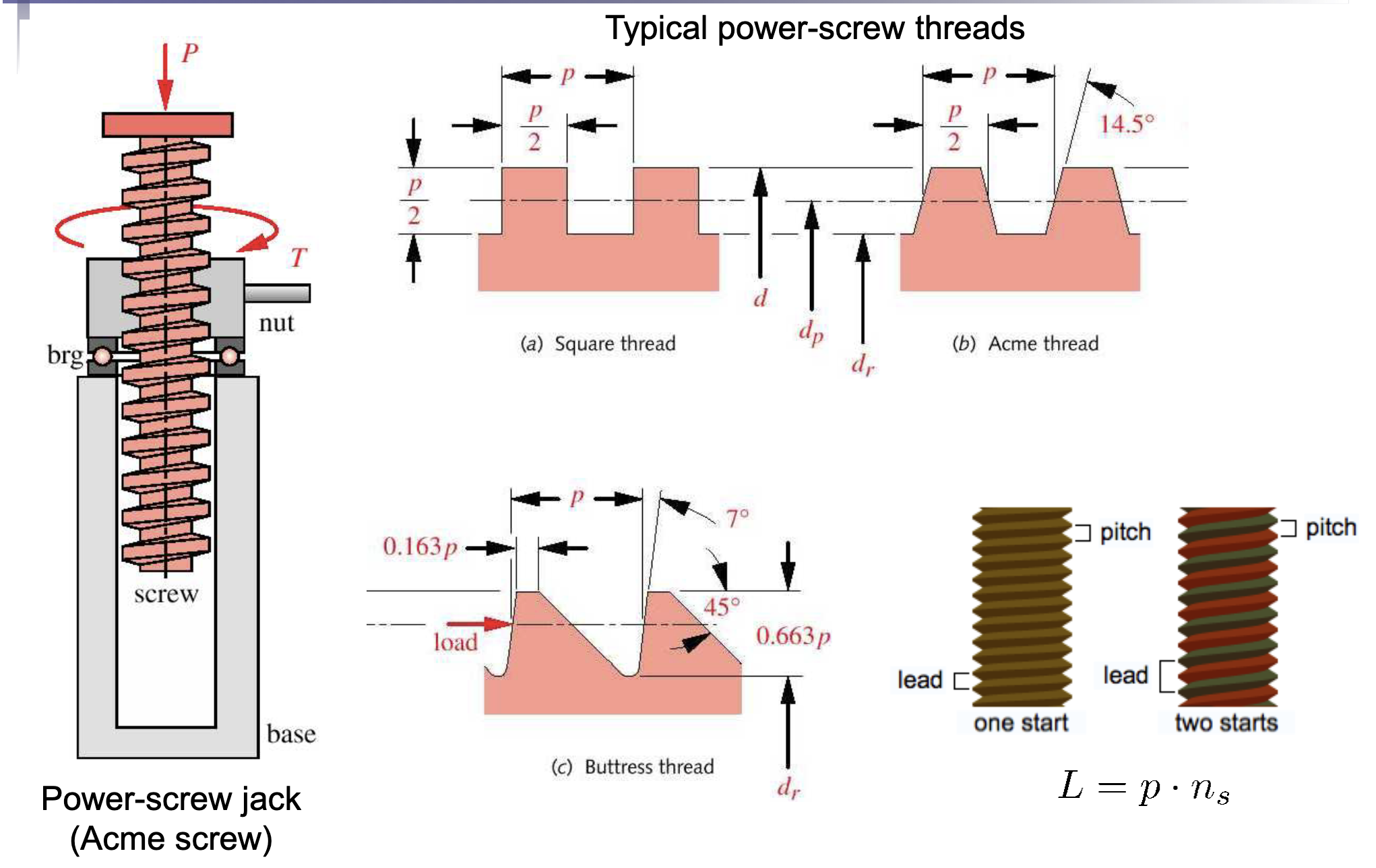
- The in this equation is the lead distance where is the start number
Force Analysis
- We abstract the problem as a mass travelling up an incline under a loading P
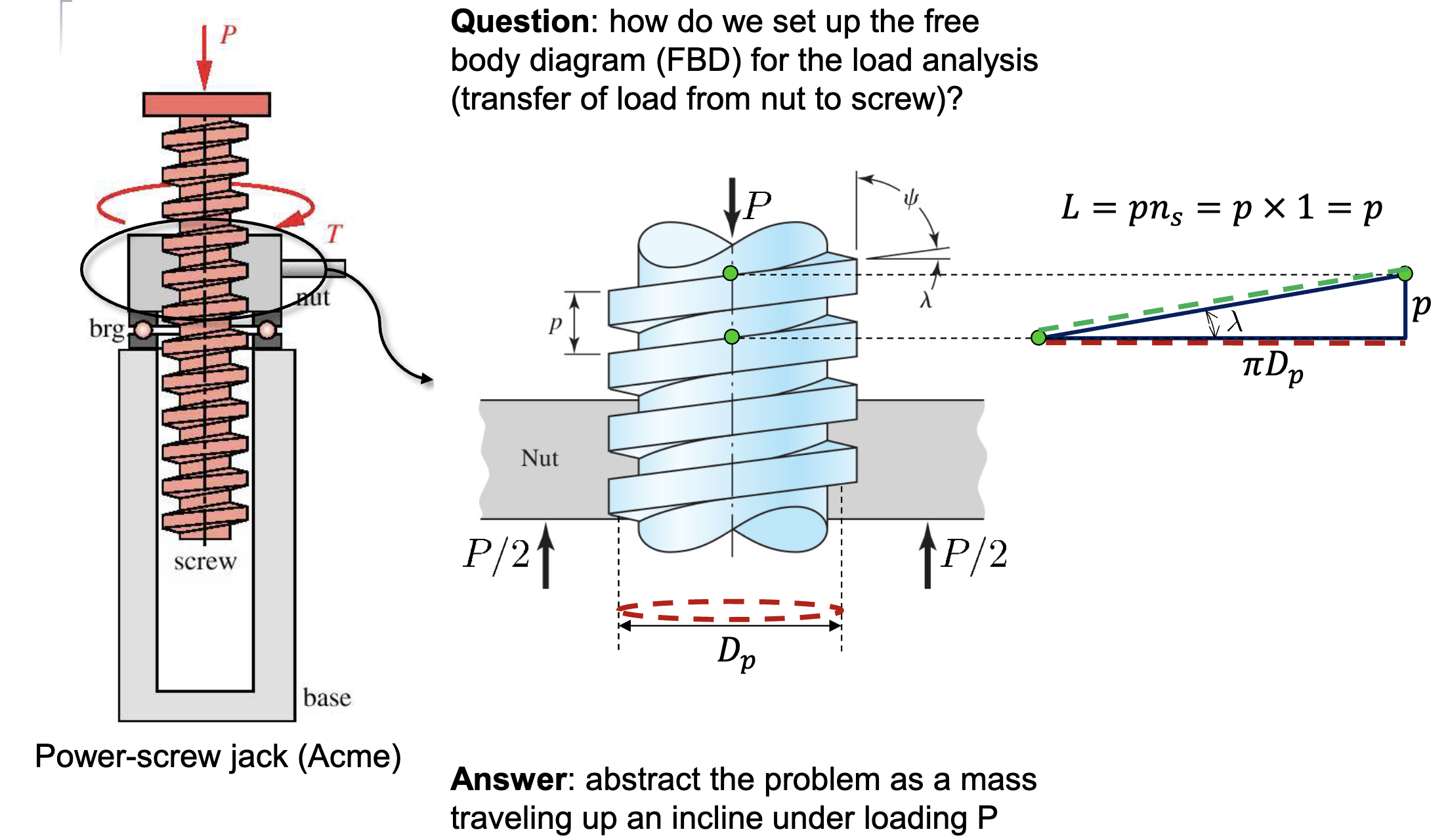
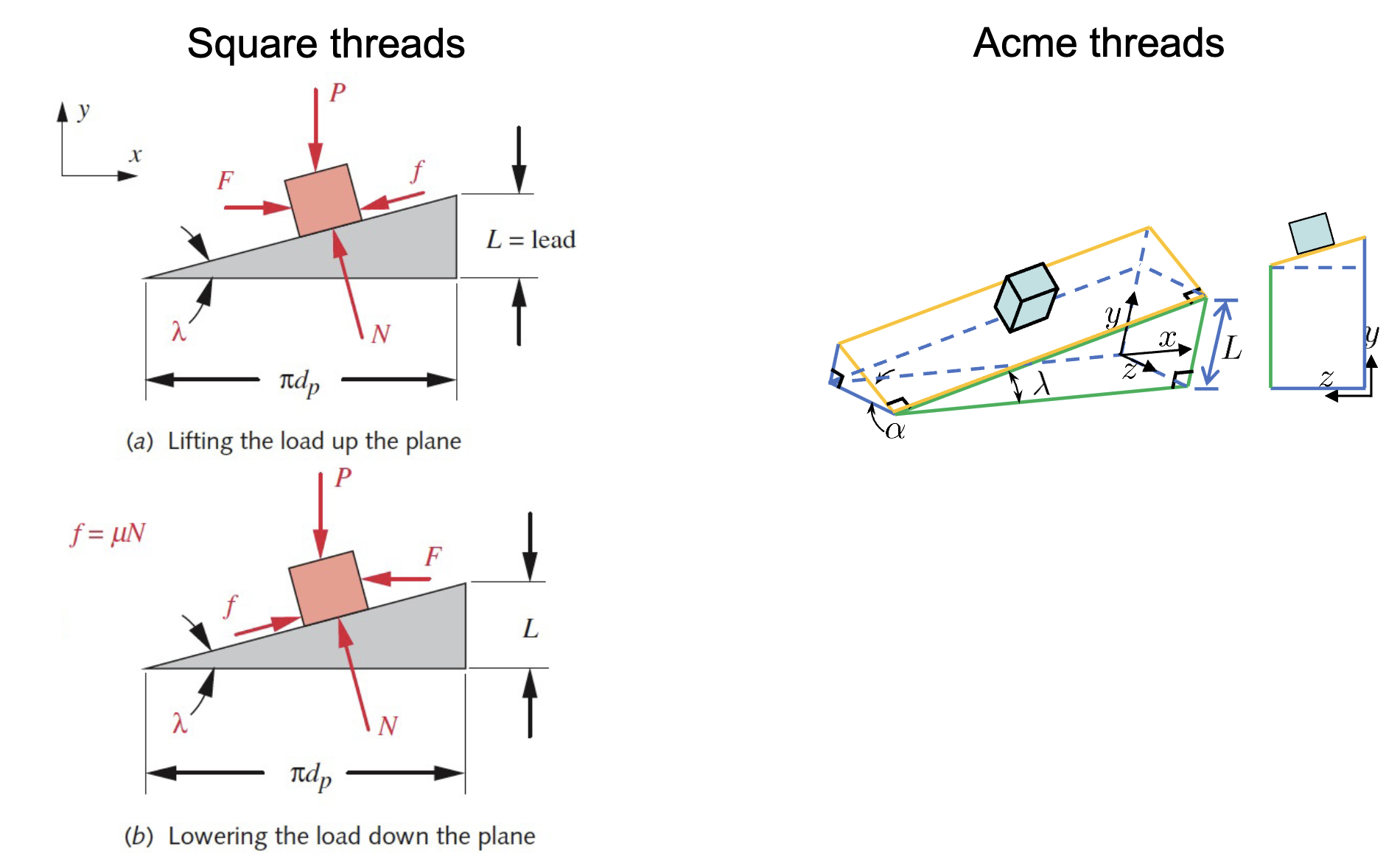
For Square Threads
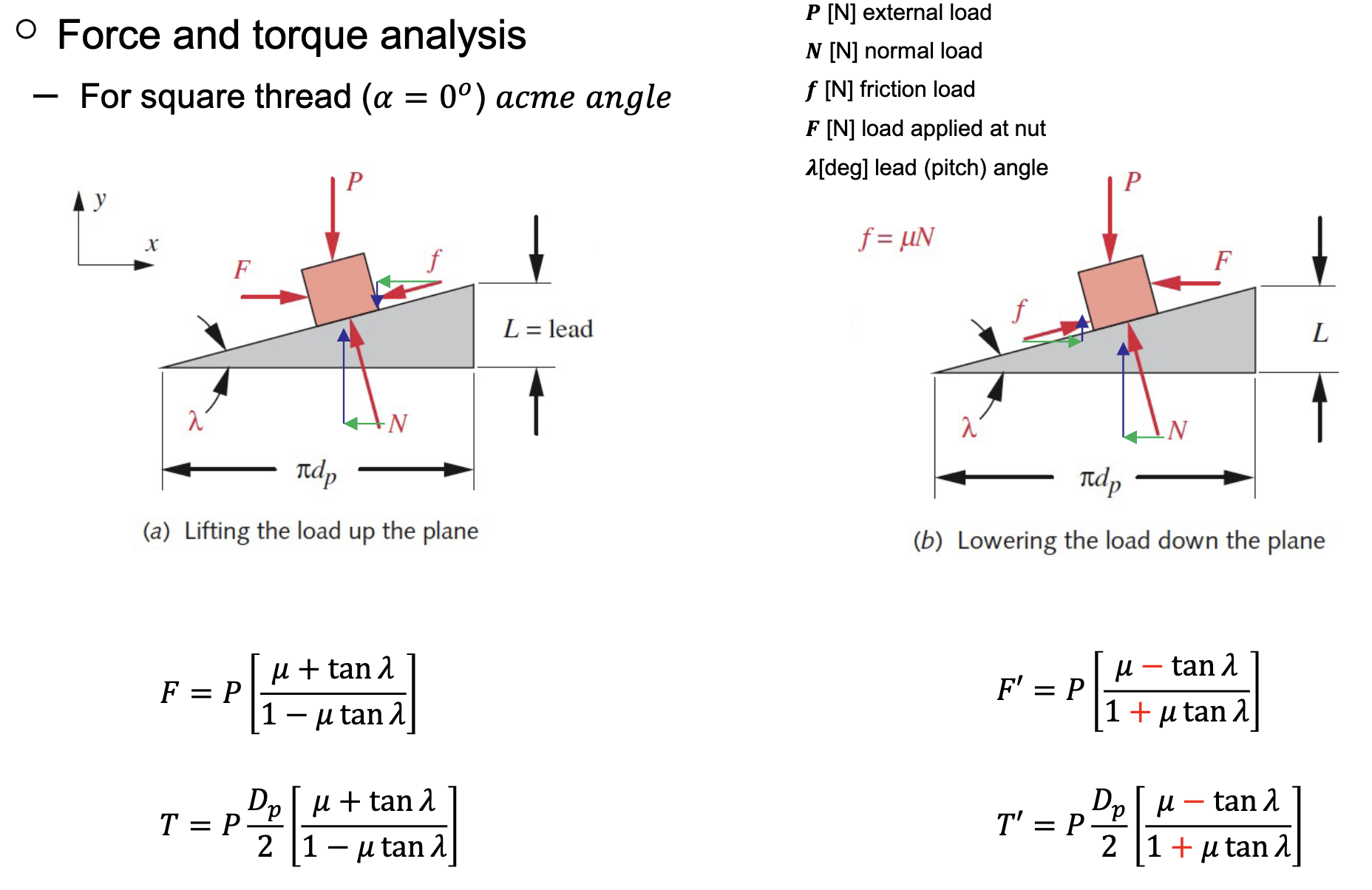
For Acme Threads
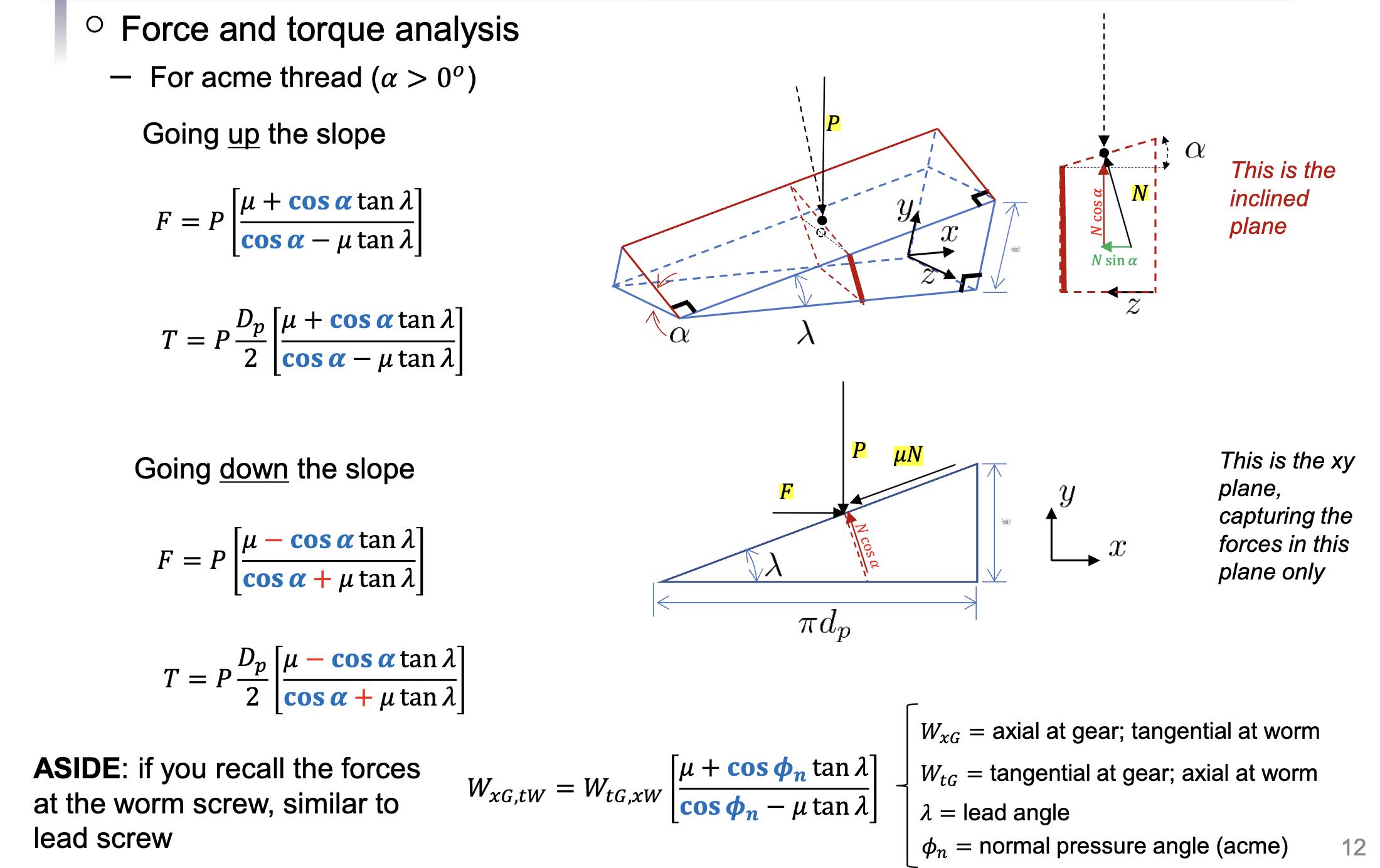
In practice there is also additional friction at the collar (or the thrust bearing)
- Therefore…
Self Locking and Back Driving
- Self locking: A condition where the screw cannot be turned by the axial force P. That is, it does not need a brake to hold the load statically
- Back-driving: A condition where the load P pushing axially on the screw will cause the screw to turn
The condition for self-locking for acme threads
- Similarly for square threads…
Power Screw Efficiency
Without collar friction
- Acme: (input work at nut or screw)
- Acme: (output work at the load P)
- For a square thread:
Note
Depending on the lead angle, there are different efficiency curves where 45° is the optimal angle for the highest efficiency
Ball Screws
- Very smooth (low friction), thus back-drivable
- High load capacity
- Popular for linear drive mechanism